 |
|
Packing Pennies in the Plane |
Suppose we now look at a cell in a layout.
Draw the circumscribing circle as well, or at least its
intersection with the cell. Where it extends beyond
the cell, the line cut off by the cell boundary
will be
the bisector of the rhombus associated
to two discs whose
hexagonally circumscribed circles intersect.
We can now divide up the cell
into distinct regions of three types:
6. How dense can a disc be in its Voronoi cell?
We want to show that a disc take up
no larger proportion of the area in its Voronoi cell
than it does in its circumscribing regular hexagon.
To show this,
we partition the cell into sub-regions of different types.
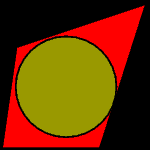
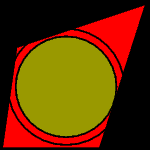
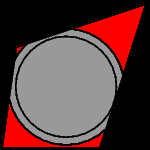
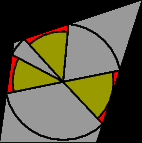
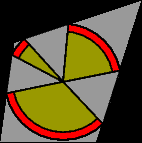
The density of the distribution in the first type of region is
of course
6. How dense can a disc be in its Voronoi cell?